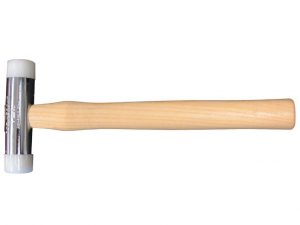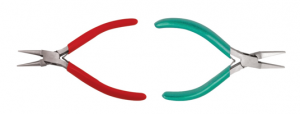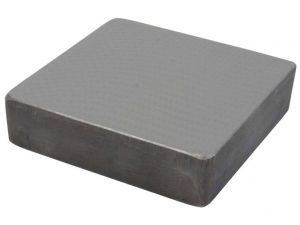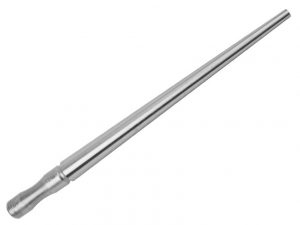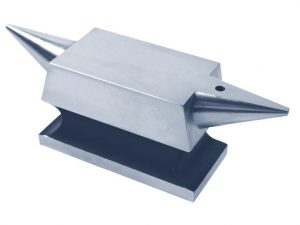One of the most fundamental processes in jewellery making is metal forming, which is the manipulation of metal in its raw state to change it into a different shape using a variety of tools. In the long run, a number of different jewellery tools can be required for metal forming depending on your work, but it is possible to manage with a few basic items when starting out as a jewellery maker. To give you a head start, we have selected our top 5 jewellery tools for metal forming that are ideal for beginners below.
Nylon Headed Hammer
This is an essential hammer suitable for a variety of jewellery making tasks, making it a very formidable tool to have. A nylon headed hammer has 2 tough, durable faces which are identical, and is used for forming and bending metal – but not for marking it.
As the heads of a nylon headed hammer wear out over time they can be removed and replaced with new heads, meaning this is a worthwhile jewellery tool to have on your bench.
Pliers
Pliers for jewellery making are available in a number of different types, but the 2 of the most essential types are round nose pliers and flat nosed pliers. These are mainly used for gripping, forming and bending metal, particularly when working with wire.
Both of these pliers are ideal for creating bends – loops and curves with round nose pliers, and angular bends with flat nosed pliers – but it is worth noting that different sized pliers will be required depending on the scale of your work.
Steel Block
Also known as a ‘flat plate’, this is a general purpose jewellery tool which is used alongside a mallet or hammer when metal forming. It is also useful for acting as a hard plate when texturing or punching a piece of metal.
The flat, polished surface of a steel block provides the perfect surface for flattening metal, as long as the surface is kept clean and polished otherwise any marks will be transferred to the metal’s surface when hammering.
Ring Triblet or Mandrel
Triblets and mandrels are an essential tool for jewellery making when forming metal into rings and circular shapes. Made from steel, they should be kept clean and polished much like a steel block to avoid any marks being transferred onto the surface of your metal.
Unlike a ring sizer, triblets and mandrels do not tend to have size markings on the outside so it is important not to confuse the two. To get the best out of your triblet or mandrel, it needs to be secured in a sturdy vice before using.
Anvil
Anvils have been used for shaping metal for a very long time, which proves just how useful they are. They are tapered at either end, normally with a rounded taper at one end and a square one at the other, and have a flat central former between the two.
Metal is struck against these tapers to alter the contour, with the former acting as a support for the metal as it is shaped. Anvils are available in a variety of sizes, but for jewellery making a bench anvil is suitable for most purposes.
The specific metal forming tools you will need for your work can vary, and the above 5 are just some of the essentials required for this particular jewellery making technique. If you want to explore some of the other popular jewellery tools ideal for metal forming along with soldering, cutting and lots more jewellery making techniques, view our Beginners Guide to Jewellery Making Tools, for free online here or via the Cooksongold app today.

jaskcreative

